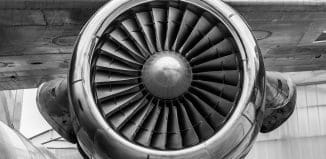HD-quality video: Now available in Unmanned Aerial Vehicles
This post is also available in:  עברית (Hebrew)
עברית (Hebrew)

Operational demands from Unmanned Aerial Vehicles (UAVs) and Systems (UAS) grow as their deployment and use increase and expand (akin to appetite growing stronger during mealtime). The latest development in the field of live airborne visual intelligence is High Definition (HD) video, guaranteeing higher resolution and definition.
HD cameras installed as dedicated payloads on board UASs (and at times installed differently on board unmanned naval vessels or ground vehicles), provide all the advantages of high resolution photography, thereby enabling, for example, identification of license plates from, high altitudes, or even track firearms. This provides forces on the ground high quality accurate situational awareness complete with a significant tactical advantage.
During their missions, UAVs must meet long, continuous endurance, which sometimes include both night and day time activity, meaning varying light. Thermal imaging at dusk or in the dark (with heat signatures appearing in various shades of gray) provides an alternative to daylight photography. Having to replace the camera (dedicated payload) in accordance with the daytime or night time could constitute a significant disadvantage, increase UAVs’ “maintenance windows”, interrupt continuous relay and inflate operating costs.
Another critical demand of remote photography is stabilizing cameras, especially cameras installed outside the UAV, exposed to wind and engine vibration. It is all the more important to stabilize cameras in the age of remote HD photography.
Unmanned systems conference 2014 – Israel
In parallel with the constant increase in operation and tactical demands of dedicated payloads in general and cameras in particular, UAVs are getting smaller (or can carry more devices and munitions). This underscores the need to minimize the payload and its power consumption and tailor it to extreme conditions of cold, hear, humidity, vibrations, etc.
In order to have HD output throughout the “chain of production”, which begins with the payload camera and ends with the (HD) monitors, each element must support HD, including the communication channel used to transmit the output from the camera to the command and control station.
Recently, a new solution to the various operational demands on the one hand and the growing performance demands and flight limitations on the other, CONTROP, which specialized in unique military grade electro-optic components, unveiled its MICRO three-gimbal gyro Stabilized Miniature Payload – MICRO-STAMP, tailored for military applications.
The MICRO-STAMP payload is integrated with an HD-camera and an uncooled thermal camera. It is gyro-stabilized complete with tiny engines which compensate for the movement of the platform (UAV or other) and its vibrations. The new smartphone-size CONTROP MICRO- STAMP is ruggedized, weighing a mere 300 grams.
MICRO- STAMP features standard interface, akin to the other, more massive payloads CONTROP offers:
- State of the art HD video camera complete with unique cables and connectors tailored to avionics and HD specifications
- Communications dedicated to UAV command, management and control
- Payload power supply, received from the host platform
CONTROP comprises 200 employees, mostly physics, electro-optics, engineering and production experts, is based at Hod-Hasharon, where its production line and campus are headquartered. The company is a jointly-owned subsidiary of RAFAEL and AERONAUTICS.





























